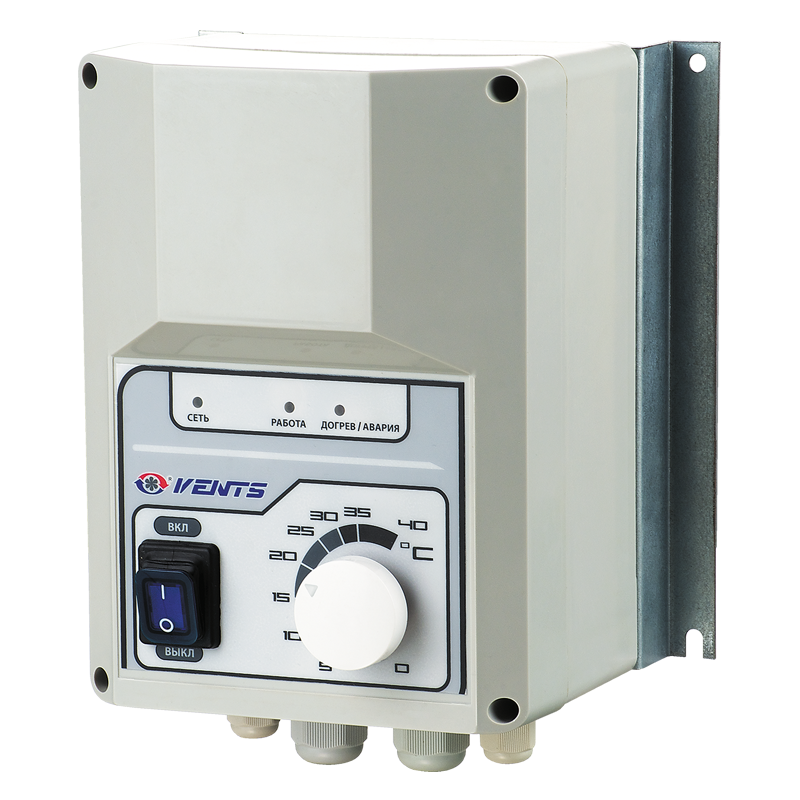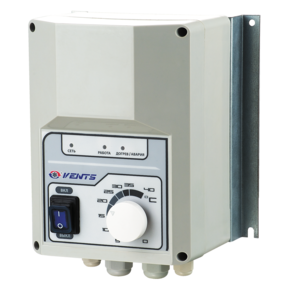RNS-25
- Description
- Characteristics
- Downloads
- Dimensions
- Wiring plan
Description
Description
| APPLICATIONS | DESIGN AND CONTROL |
|
|
| PROTECTION | |
|
|
| MOUNTING | |
|
|
| CONTROL PARAMETERS | |
| Regulation time [s] | 0,1 (fixed) |
| Cycle length [s] | 1...10 ((adjustable) |
| Indication | Power, operation and malfunction indicator |
| Type of temperature sensor used | LM 60 |
| Input signal parameters [V] | 0...10 (direct current) |
| Set temperature range [°C] | 0...40 (adjustable) |
Characteristics
Characteristics
| Parameter |
RNS-25 |
Measurement unit |
|---|---|---|
| Frequency | 50 | Hz |
Max. load current (single stage)  |
40 | A |
Max. load current (three stages)  |
120 | A |
Heater power (single stage)  |
25 | kW |
Heater power (three stages)  |
75 | kW |
Control circuit supply voltage  |
230 | V |
| Protection rating | IP54 | - |
| Cross-section area of screw terminal block input pin | 4...10 | mm² |
| Mains parameters: | voltage [V]: 210-255, 380-415frequency [Hz]: 50-60phases: 1 or 3 | - |
| Overall dimensions | 170х255х140 | mm |
| Operating temperature range | +5...+40 | °С |
| Mass | 1.2 | kg |
Files archieve
Downloads
Select document type
Dimensions
Characteristics
| Parameter | Value | Measurement unit |
|---|
Wiring plan
Wiring plan
External connections diagram

Control unit wiring diagrams

Attention!
THE CONTROLLER IS INTENDED FOR VERTICAL MOUNTING ONLY!







 Domestic fans
Domestic fans  Industrial and commercial fans
Industrial and commercial fans  Single-room ventilation systems with heat recovery
Single-room ventilation systems with heat recovery  Air handling units
Air handling units  Air heating systems
Air heating systems  Smoke extraction and ventilation
Smoke extraction and ventilation  Air sterilizers
Air sterilizers  Accessories for ventilating systems
Accessories for ventilating systems  Electrical accessories
Electrical accessories  Ventilation ducts and fittings
Ventilation ducts and fittings  Air distribution components
Air distribution components  Ventilation kits and vents
Ventilation kits and vents 


